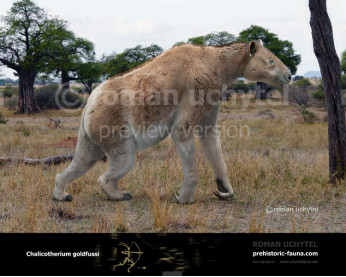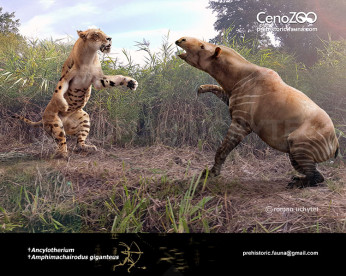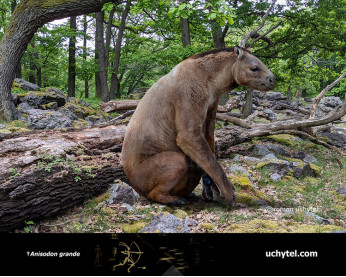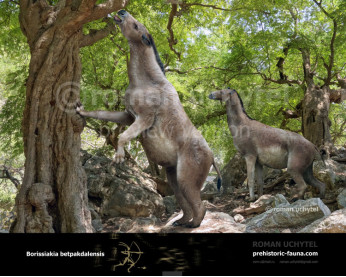Moropus distans
168168Moropus distans (Moropus Marsh, 1877)
Order: Perissodactyla
Family: Chalicotheriidae
Time period: Early Miocene of North America
Size: 3,3 m in length, 240 cm in height, 1000 - 1700 kg of weight
Typical representative: Moropus distans Marsh, 1877
Moropus is an extinct genus of mammal, belonging to a group called chalicotheres, which were perissodactyl ("odd-toed") mammals, endemic to North America during the Miocene, existing for approximately 6.8 million years.
Moropus is related to the modern horse, rhino, and tapir. Like other chalicotheres, they differed from their modern relatives in having large claws, rather than hooves, on the front feet; these claws may have been used for defense or digging for food. Moropus stood about 2.4 m tall at the shoulder. The three highly compressed claw-like hooves on each foot were split down the middle. These claws actually gave Moropus its name: " slow "or "sloth foot". This name implies that because of the claws, Moropus was a clumsy mover. But the articulation of the phalangeal (finger) bones, in addition to probable large foot and toe pads, shows that Moropus probably could raise the claws slightly to enable it to move about quite smoothly. Because the hooves curve inward, it probably had a pigeon-toed gait.
Moropus distans (Moropus Marsh, 1877)
Order: Perissodactyla
Family: Chalicotheriidae
Time period: Early Miocene of North America
Size: 3,3 m in length, 240 cm in height, 1000 - 1700 kg of weight
Typical representative: Moropus distans Marsh, 1877
Moropus is an extinct genus of mammal, belonging to a group called chalicotheres, which were perissodactyl ("odd-toed") mammals, endemic to North America during the Miocene, existing for approximately 6.8 million years.
Moropus is related to the modern horse, rhino, and tapir. Like other chalicotheres, they differed from their modern relatives in having large claws, rather than hooves, on the front feet; these claws may have been used for defense or digging for food. Moropus stood about 2.4 m tall at the shoulder. The three highly compressed claw-like hooves on each foot were split down the middle. These claws actually gave Moropus its name: " slow "or "sloth foot". This name implies that because of the claws, Moropus was a clumsy mover. But the articulation of the phalangeal (finger) bones, in addition to probable large foot and toe pads, shows that Moropus probably could raise the claws slightly to enable it to move about quite smoothly. Because the hooves curve inward, it probably had a pigeon-toed gait.

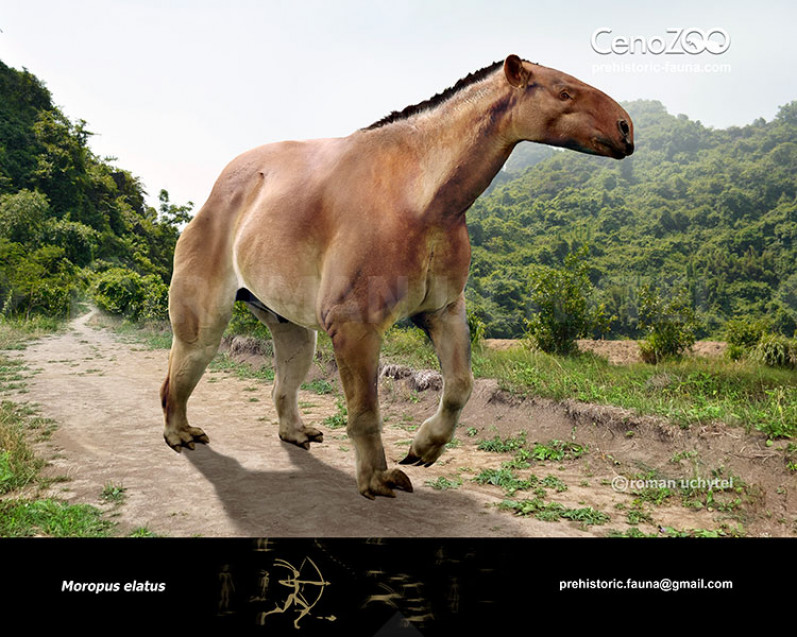
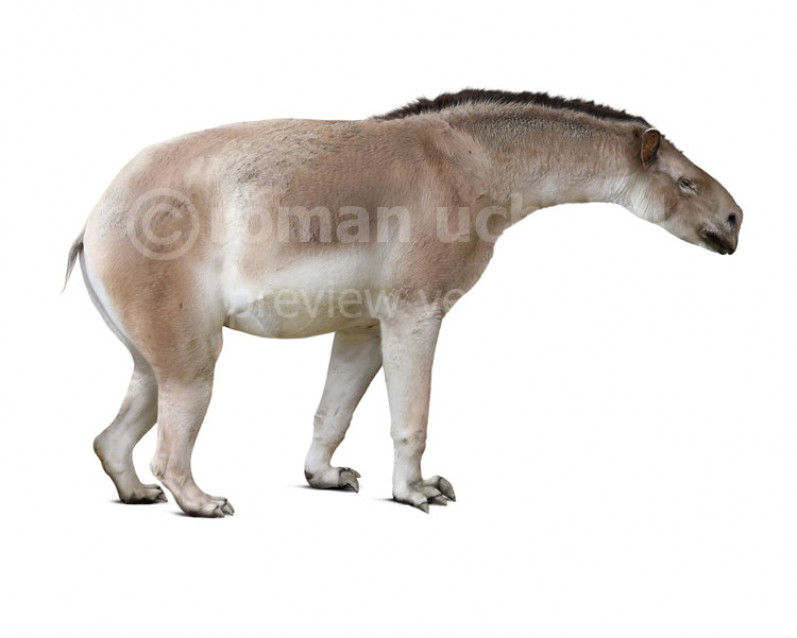
-797x638.jpg)
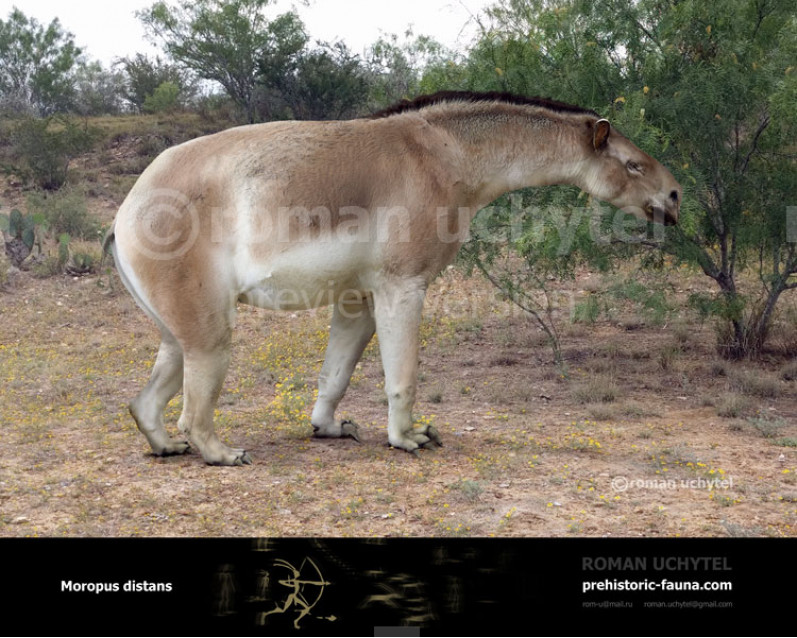


-70x56.jpg)

